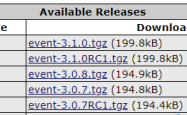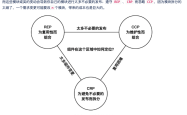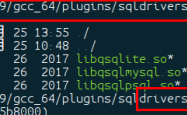PHP局部异常因子算法-Local Outlier Factor(LOF)算法的具体实现解析
这两天在完善自己系统的过程中要实现一个查找异常的功能,于是在朋友的指点下学习并实现了异常点查找的一个基本算法“局部异常因子算法-Local Outlier Factor(LOF)算法”。
首先,找相关说明看看这是个什么东西吧。
我参考了这一篇文章: 异常点/离群点检测算法——LOF
大致明白了lof算法是在讲什么,我的理解还有很多不完善的地方,不过还是作为一个初学者写出来供大家批评指正。
根据我的理解大致描述如下:
1、 k-distance,点p的第k距离就是距离点p第k远的那个点的距离,k可以是任意值。在实际生活中可能会这样:小明说“小红家是离我家第五近的,小赵、小钱、小孙、小李家都比她家离我家近”所以此处小红家距离小明家的距离就是小明家k为5时的第k距离。
2、k-distance neighborhood of p,第k距离领域,按照上面的例子就是{小赵、小钱、小孙、小李、小红},把离p最近的k个点放入一个数组就是第k距离领域了。
3、reach-distance:可达距离。点o到点p的第k可达距离分两种情况,一种是p在o的第k距离领域那个数组中,这时候可达距离等于第k距离,第二种就是p离点o比较远,不在o的第k距离领域中,此时的可达距离即为真实距离。依然使用上述的例子,小赵家在小明家的第k邻域中,所以可达距离就是第k距离,就是小红家的距离,而二狗子家里小明家很远,可达距离就是真实距离了。
4、local reachability density:局部可达密度。点p的局部可达密度是指点p第k距离邻域中所有成员到点p的可达距离的平均值的倒数,有点复杂,不过多读几遍还是蛮好理解的,就不举例子了。
5、local outlier factor:局部离群因子。点p的局部离群因子即为领域中所有点的局部可达密度的平均数比点p的局部可达密度,不做解释。
到这里为止就是我对lof算法的一个大致理解,具体讲解还要看上面我参考的那篇文章,写的很清楚。
接下来我找了网上的一篇对此算法的实现,很遗憾没有php版本,于是我就找到了这篇文章:基于密度的局部离群点检测(lof算法) (Java 实现)
如题所示,是一篇Java实现,于是我就在大神的基础上对其进行修改,改成了一个php的版本。因为对迭代器理解的不是很好,所以迭代器实现部分改成了一般函数,有机会再进行完善。
如下:
?| 1 2 3 4 5 6 7 8 9 10 11 12 13 14 15 16 17 18 19 20 21 22 23 24 25 26 27 28 29 30 31 32 33 34 35 36 37 38 39 40 41 42 43 44 45 46 47 48 49 50 51 52 53 54 55 56 57 58 59 60 61 62 63 64 65 66 67 68 69 70 71 72 73 74 75 76 77 78 79 80 81 82 83 84 85 86 87 88 89 90 91 92 93 94 95 96 97 98 99 100 101 102 103 104 105 106 107 108 109 110 111 112 113 114 115 116 117 118 119 120 121 122 123 124 125 126 127 128 129 130 131 132 133 134 135 136 137 138 139 140 141 142 143 144 145 146 147 148 149 150 151 152 153 154 155 156 157 158 159 160 161 162 163 164 165 166 167 168 169 170 171 172 173 174 175 176 177 178 179 180 181 182 183 184 185 186 187 188 189 190 191 192 193 194 195 196 197 198 199 200 201 202 203 204 205 206 207 208 209 210 211 212 213 214 215 216 217 218 219 220 221 222 223 224 225 226 227 228 229 230 231 232 233 234 235 236 237 238 239 240 241 242 243 244 245 246 247 248 249 250 251 252 253 254 255 256 257 258 259 260 261 262 263 264 265 266 267 268 269 270 271 272 273 274 275 276 277 278 279 280 281 282 283 284 285 286 287 288 289 290 291 292 293 294 295 296 297 298 299 300 301 302 303 304 305 306 307 308 309 310 311 312 313 314 315 316 317 318 319 320 321 322 323 324 325 326 327 328 329 330 331 332 333 334 335 336 337 338 339 340 341 342 343 344 345 346 347 348 349 350 351 352 353 354 355 356 357 358 359 360 361 362 363 364 365 366 367 368 369 370 371 372 373 374 375 376 377 378 379 380 381 382 383 384 385 386 387 388 389 390 391 392 393 394 395 396 397 398 399 400 401 402 403 404 405 406 407 408 409 410 411 412 413 414 415 416 417 418 419 420 421 | <?php class DataNode { private $nodeName ; // 样本点名 private $dimensioin ; // 样本点的维度 private $kDistance ; // k-距离 private $kNeighbor = array (); // k-领域 private $distance ; // 到给定点的欧几里得距离 private $reachDensity ; // 可达密度 private $reachDis ; // 可达距离 private $lof ; // 局部离群因子 public function __construct() { $num = func_num_args(); //获得参数个数 $args = func_get_args(); //获得参数列表数组 switch ( $num ){ case 0: break ; case 2: $this ->__call( '__construct2' , $args ); break ; } } public function __call( $name , $arg ) //根据函数名调用函数 { return call_user_func_array( array ( $this , $name ), $arg ); } public function __construct2( $nodeName , $dimensioin ) { $this ->nodeName = $nodeName ; $this ->dimensioin = $dimensioin ; } public function getNodeName() { return $this ->nodeName; } public function setNodeName( $nodeName ) { $this ->nodeName = $nodeName ; } public function getDimensioin() { return $this ->dimensioin; } public function setDimensioin( $dimensioin ) { $this ->dimensioin = $dimensioin ; } public function getkDistance() { return $this ->kDistance; } public function setkDistance( $kDistance ) { $this ->kDistance = $kDistance ; } public function getkNeighbor() { return $this ->kNeighbor; } public function setkNeighbor( $kNeighbor ) { $this ->kNeighbor = $kNeighbor ; } public function getDistance() { return $this ->distance; } public function setDistance( $distance ) { $this ->distance = $distance ; } public function getReachDensity() { return $this ->reachDensity; } public function setReachDensity( $reachDensity ) { $this ->reachDensity = $reachDensity ; } public function getReachDis() { return $this ->reachDis; } public function setReachDis( $reachDis ) { $this ->reachDis = $reachDis ; } public function getLof() { return $this ->lof; } public function setLof( $lof ) { $this ->lof = $lof ; } } class OutlierNodeDetect { private static $INT_K = 5; //正整数K // 1.找到给定点与其他点的欧几里得距离 // 2.对欧几里得距离进行排序,找到前5位的点,并同时记下k距离 // 3.计算每个点的可达密度 // 4.计算每个点的局部离群点因子 // 5.对每个点的局部离群点因子进行排序,输出。 public function getOutlierNode( $allNodes ) { $kdAndKnList = $this ->getKDAndKN( $allNodes ); $this ->calReachDis( $kdAndKnList ); $this ->calReachDensity( $kdAndKnList ); $this ->calLof( $kdAndKnList ); //降序排序 $kdAndKnList = $this ->rsortArr( $kdAndKnList ); return $kdAndKnList ; } /** * 计算每个点的局部离群点因子 * @param kdAndKnList */ private function calLof( $kdAndKnList ) { foreach ( $kdAndKnList as $node ): $tempNodes = $node ->getkNeighbor(); $sum = 0.0; foreach ( $tempNodes as $tempNode ): $rd = $this ->getRD( $tempNode ->getNodeName(), $kdAndKnList ); $sum = $rd / $node ->getReachDensity() + $sum ; endforeach ; $sum = $sum / (double) self:: $INT_K ; $node ->setLof( $sum ); endforeach ; } /** * 计算每个点的可达距离 * @param kdAndKnList */ private function calReachDensity( $kdAndKnList ) { foreach ( $kdAndKnList as $node ): $tempNodes = $node ->getkNeighbor(); $sum = 0.0; $rd = 0.0; foreach ( $tempNodes as $tempNode ): $sum = $tempNode ->getReachDis() + $sum ; endforeach ; $rd = (double) self:: $INT_K / $sum ; $node ->setReachDensity( $rd ); endforeach ; } /** * 计算每个点的可达密度,reachdis(p,o)=max{ k-distance(o),d(p,o)} * @param kdAndKnList */ private function calReachDis( $kdAndKnList ) { //for (DataNode node : kdAndKnList) { foreach ( $kdAndKnList as $node ): $tempNodes = $node ->getkNeighbor(); //for (DataNode tempNode : tempNodes) { foreach ( $tempNodes as $tempNode ): //获取tempNode点的k-距离 $kDis = $this ->getKDis( $tempNode ->getNodeName(), $kdAndKnList ); if ( $kDis < $tempNode ->getDistance()) { $tempNode ->setReachDis( $tempNode ->getDistance()); } else { $tempNode ->setReachDis( $kDis ); } endforeach ; endforeach ; } /** * 获取某个点的k-距离(kDistance) * @param nodeName * @param nodeList * @return */ private function getKDis( $nodeName , $nodeList ) { $kDis = 0; //for (DataNode node : nodeList) { foreach ( $nodeList as $node ): if ( $this ->strcomp(trim( $nodeName ),trim( $node ->getNodeName()))) { $kDis = $node ->getkDistance(); break ; } endforeach ; return $kDis ; } private function strcomp( $str1 , $str2 ){ if ( $str1 == $str2 ){ return TRUE; } else { return FALSE; } } /** * 获取某个点的可达距离 * @param nodeName * @param nodeList * @return */ private function getRD( $nodeName , $nodeList ) { $kDis = 0; //for (DataNode node : nodeList) { foreach ( $nodeList as $node ): //if (nodeName.trim().equals(node.getNodeName().trim())) { if ( $this ->strcomp(trim( $nodeName ),trim( $node ->getNodeName()))) { $kDis = $node ->getReachDensity(); break ; } endforeach ; return $kDis ; } /** * 计算给定点NodeA与其他点NodeB的欧几里得距离(distance),并找到NodeA点的前5位NodeB,然后记录到NodeA的k-领域(kNeighbor)变量。 * 同时找到NodeA的k距离,然后记录到NodeA的k-距离(kDistance)变量中。 * 处理步骤如下: * 1,计算给定点NodeA与其他点NodeB的欧几里得距离,并记录在NodeB点的distance变量中。 * 2,对所有NodeB点中的distance进行升序排序。 * 3,找到NodeB点的前5位的欧几里得距离点,并记录到到NodeA的kNeighbor变量中。 * 4,找到NodeB点的第5位距离,并记录到NodeA点的kDistance变量中。 * @param allNodes * @return List<Node> */ private function getKDAndKN( $allNodes ) { $kdAndKnList = array (); for ( $i = 0 ; $i < count ( $allNodes ); $i ++) { $tempNodeList = array (); $nodeA = new DataNode( $allNodes [ $i ]->getNodeName(), $allNodes [ $i ]->getDimensioin()); //1,找到给定点NodeA与其他点NodeB的欧几里得距离,并记录在NodeB点的distance变量中。 for ( $j = 0; $j < count ( $allNodes ); $j ++) { $nodeB = new DataNode( $allNodes [ $j ]->getNodeName(), $allNodes [ $j ]->getDimensioin()); //计算NodeA与NodeB的欧几里得距离(distance) $tempDis = $this ->getDis( $nodeA , $nodeB ); $nodeB ->setDistance( $tempDis ); array_push ( $tempNodeList , $nodeB ); //$tempNodeList.add(nodeB); } //2,对所有NodeB点中的欧几里得距离(distance)进行升序排序。 $tempNodeList = $this ->sortArr( $tempNodeList ); $neighArr = array (); for ( $k = 1; $k <= self:: $INT_K ; $k ++) { //3,找到NodeB点的前5位的欧几里得距离点,并记录到到NodeA的kNeighbor变量中。 array_push ( $neighArr , $tempNodeList [ $k ]); if ( $k == self:: $INT_K - 1) { //4,找到NodeB点的第5位距离,并记录到NodeA点的kDistance变量中。 $nodeA ->setkDistance( $tempNodeList [ $k ]->getDistance()); } } $nodeA ->setkNeighbor( $neighArr ); array_push ( $kdAndKnList , $nodeA ); } return $kdAndKnList ; } /** * 计算给定点A与其他点B之间的欧几里得距离。 * 欧氏距离的公式: * d=sqrt( ∑(xi1-xi2)^2 ) 这里i=1,2..n * xi1表示第一个点的第i维坐标,xi2表示第二个点的第i维坐标 * n维欧氏空间是一个点集,它的每个点可以表示为(x(1),x(2),...x(n)), * 其中x(i)(i=1,2...n)是实数,称为x的第i个坐标,两个点x和y=(y(1),y(2)...y(n))之间的距离d(x,y)定义为上面的公式. * @param A * @param B * @return */ private function getDis( $A , $B ) { $dis = 0.0; $dimA = $A ->getDimensioin(); $dimB = $B ->getDimensioin(); if ( count ( $dimA ) == count ( $dimB )) { for ( $i = 0; $i < count ( $dimA ); $i ++) { $temp = pow( $dimA [ $i ] - $dimB [ $i ], 2); $dis = $dis + $temp ; } $dis = pow( $dis , 0.5); } return $dis ; } //Distance比较 private function compareAandB( $arr , $A , $B ) { if (( $arr [ $A ]->getDistance()- $arr [ $B ]->getDistance())<0) return -1; else if (( $arr [ $A ]->getDistance()- $arr [ $B ]->getDistance())>0) return 1; else return 0; } //lof比较 private function compareAandBLof( $arr , $A , $B ) { if (( $arr [ $A ]->getLof()- $arr [ $B ]->getLof())<0) return -1; else if (( $arr [ $A ]->getLof()- $arr [ $B ]->getLof())>0) return 1; else return 0; } private function changeAandB( $arr , $A , $B ) { $tempChange = $arr [ $A ]; $arr [ $A ] = $arr [ $B ]; $arr [ $B ] = $tempChange ; return $arr ; } //Distance升序 private function sortArr( $arr ) { for ( $i = 0; $i < count ( $arr ); $i ++){ for ( $j = $i + 1; $j < count ( $arr ); $j ++){ if ( $this ->compareAandB( $arr , $i , $j )>0){ $arr = $this ->changeAandB( $arr , $i , $j ); } } } return $arr ; } //lof降序 private function rsortArr( $arr ) { for ( $i = 0; $i < count ( $arr ); $i ++){ for ( $j = $i + 1; $j < count ( $arr ); $j ++){ if ( $this ->compareAandBLof( $arr , $i , $j )<0){ $arr = $this ->changeAandB( $arr , $i , $j ); } } } return $arr ; } public static function main() { $dpoints = array (); $a = array ( 2, 3 ); $b = array ( 2, 4 ); $c = array ( 1, 4 ); $d = array ( 1, 3 ); $e = array ( 2, 2 ); $f = array ( 3, 2 ); $g = array ( 8, 7 ); $h = array ( 8, 6 ); $i = array ( 7, 7 ); $j = array ( 7, 6 ); $k = array ( 8, 5 ); $l = array ( 100, 2 ); // 孤立点 $m = array ( 8, 20 ); $n = array ( 8, 19 ); $o = array ( 7, 18 ); $p = array ( 7, 17 ); $yichen = array ( 8, 21 ); array_push ( $dpoints , new DataNode( "a" , $a )); array_push ( $dpoints , new DataNode( "b" , $b )); array_push ( $dpoints , new DataNode( "c" , $c )); array_push ( $dpoints , new DataNode( "d" , $d )); array_push ( $dpoints , new DataNode( "e" , $e )); array_push ( $dpoints , new DataNode( "f" , $f )); array_push ( $dpoints , new DataNode( "g" , $g )); array_push ( $dpoints , new DataNode( "h" , $h )); array_push ( $dpoints , new DataNode( "i" , $i )); array_push ( $dpoints , new DataNode( "j" , $j )); array_push ( $dpoints , new DataNode( "k" , $k )); array_push ( $dpoints , new DataNode( "l" , $l )); array_push ( $dpoints , new DataNode( "m" , $m )); array_push ( $dpoints , new DataNode( "n" , $n )); array_push ( $dpoints , new DataNode( "o" , $o )); array_push ( $dpoints , new DataNode( "p" , $p )); array_push ( $dpoints , new DataNode( "yichen" , $yichen )); $lof = new OutlierNodeDetect(); $nodeList = $lof ->getOutlierNode( $dpoints ); foreach ( $nodeList as $node ): echo ( $node ->getNodeName() . "--" . round ( $node ->getLof(),4)); echo ( "<br>" ); endforeach ; } } OutlierNodeDetect::main(); ?> |
到此这篇关于PHP局部异常因子算法-Local Outlier Factor(LOF)算法的具体实现解析的文章就介绍到这了,更多相关PHP局部异常因子算法-Local Outlier Factor(LOF)算法内容请搜索服务器之家以前的文章或继续浏览下面的相关文章希望大家以后多多支持服务器之家!
原文链接:https://blog.csdn.net/u013914886/article/details/70194318
1.本站遵循行业规范,任何转载的稿件都会明确标注作者和来源;2.本站的原创文章,请转载时务必注明文章作者和来源,不尊重原创的行为我们将追究责任;3.作者投稿可能会经我们编辑修改或补充。










